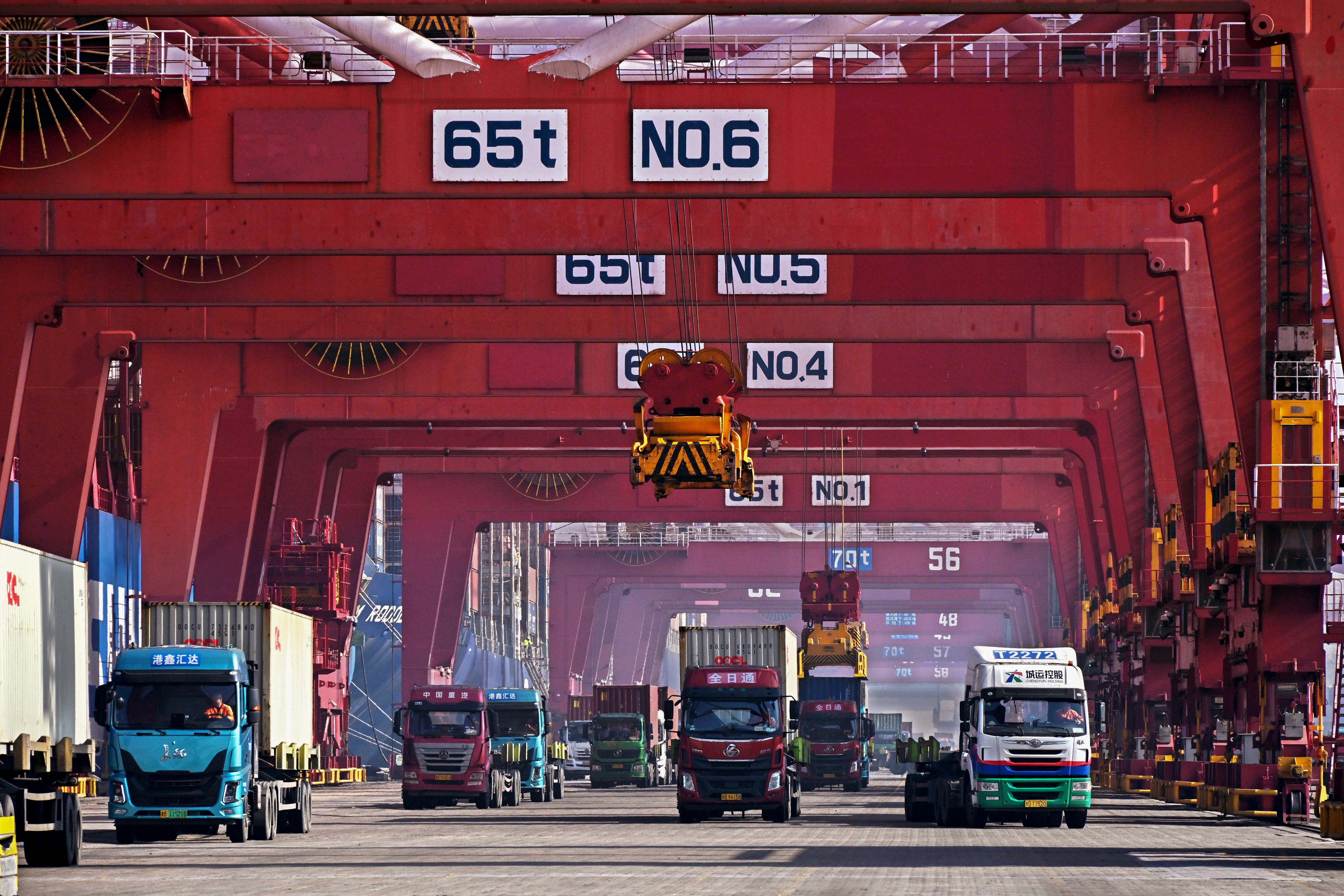China's exports and imports return to growth in April as demand improves
China reported Thursday that its exports and imports returned to growth in April, suggesting that demand is improving despite an uneven economic recovery

Your support helps us to tell the story
From reproductive rights to climate change to Big Tech, The Independent is on the ground when the story is developing. Whether it's investigating the financials of Elon Musk's pro-Trump PAC or producing our latest documentary, 'The A Word', which shines a light on the American women fighting for reproductive rights, we know how important it is to parse out the facts from the messaging.
At such a critical moment in US history, we need reporters on the ground. Your donation allows us to keep sending journalists to speak to both sides of the story.
The Independent is trusted by Americans across the entire political spectrum. And unlike many other quality news outlets, we choose not to lock Americans out of our reporting and analysis with paywalls. We believe quality journalism should be available to everyone, paid for by those who can afford it.
Your support makes all the difference.China's exports and imports returned to growth in April, suggesting that demand is improving despite an uneven economic recovery, according to customs data released Thursday.
The report showed exports grew 1.5% in April compared to a year earlier, after falling 7.5% in March, the first contraction since November. Imports surged 8.4% in April, beating analysts’ expectations and up from a 1.9% decline in March.
China has introduced various policy support measures in recent months to support growth and boost confidence in the world’s second-largest economy.
China’s trade surplus grew to $72.35 billion, up from $58.55 billion in March.
However, the outlook is not entirely positive given broader global trends, analysts said.
“We think export volumes will retreat over the coming months due to cooling consumer spending in advanced economies and the diminishing tailwind from lower export prices,” Zichun Huang of Capital Economics said in a note.
Export growth was mainly due to a lower base of comparison in the previous year, Huang said. She said that import volumes were likely to bounce back further in the near future due to “fiscal spending supporting import-heavy construction.”
The 10-nations of the Association of Southeast Asian Nations remained the largest destination for China's exports, accounting for 16.9% of the total for the first four months of the year, the report said.
Exports to the U.S. fell 1.6% in April compared to the same time a year earlier. Shipments to the European Union also declined, slipping 3.3% year-on-year.
“Considering import demand could remain resilient but exports face a higher level of risk in coming months, we expect a smaller contribution from trade to growth starting in the second quarter,” Lynn Song, an economist at ING Economics, said in a commentary.
China has struggled to bounce back after the COVID-19 pandemic, as it grapples with weaker demand globally after the Federal Reserve and other central banks raised interest rates to counter inflation. A slump in China's property sector also is weighing on growth.
China has set a target of around 5% for economic growth this year, an ambition that will require more policy support, economists say.